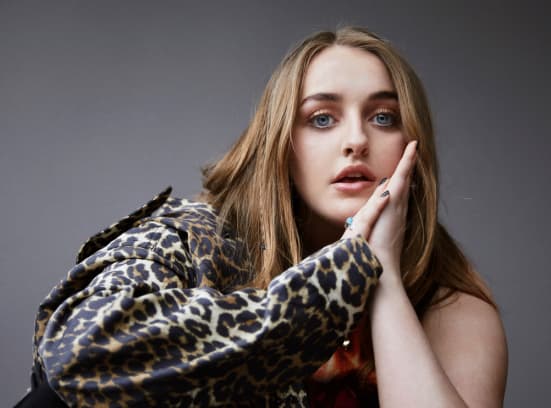John Ruskin (1819–1900), Study of a Kingfisher, with dominant Reference to Colour, 1871, Ashmolean Museum, University of Oxford
Colour Revolution, the Ashmolean’s autumn exhibition, shows how developments in art, science and technology resulted in an explosion of colour that was embraced by artists, designers and regular people of the 19th century.
While the coal industry blackened Britain’s landscape, aniline, a by-product of coal-tar, introduced a rainbow of possibilities to Victorian wardrobes. On display you can find a purple dress, crinoline and shoes dyed with the first aniline colour, Mauvine; all retaining their shocking brilliance. As production increased, the price of dyes reduced, making bright colours available to the masses.
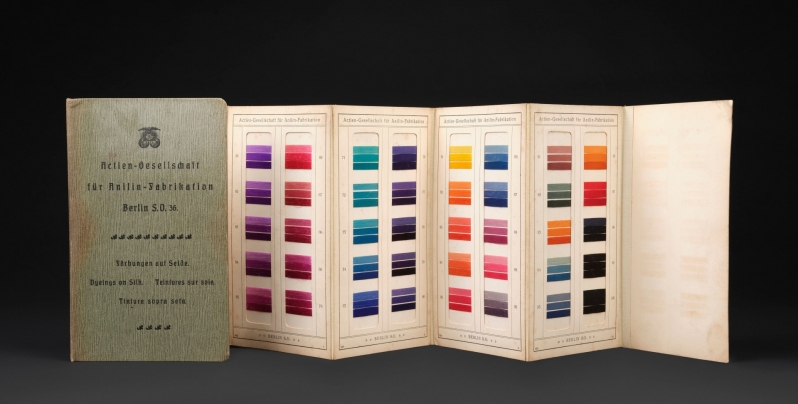
Folder of dyed woollen samples, The Berline Aniline Company, 19th century. History of Science Museum, University of Oxford
Although pigments had been manufactured for thousands of years, the term ‘synthetic’ is synonymous with the 19th century because of the scale and advances of chemical technology. It was an 18-year-old chemistry student, William Henry Perkin (1838-1907) who discovered Mauvine in 1856.This encouraged chemists across Europe to find more synthetic colours. In 1867 Perkin succeeded in making alizarin, the active colorant of madder root, a traditional vegetable dye for reds, pinks and browns. Soon new anilines were being used to print postage stamps, make inks, pigments, paints, to colour paper and even food.
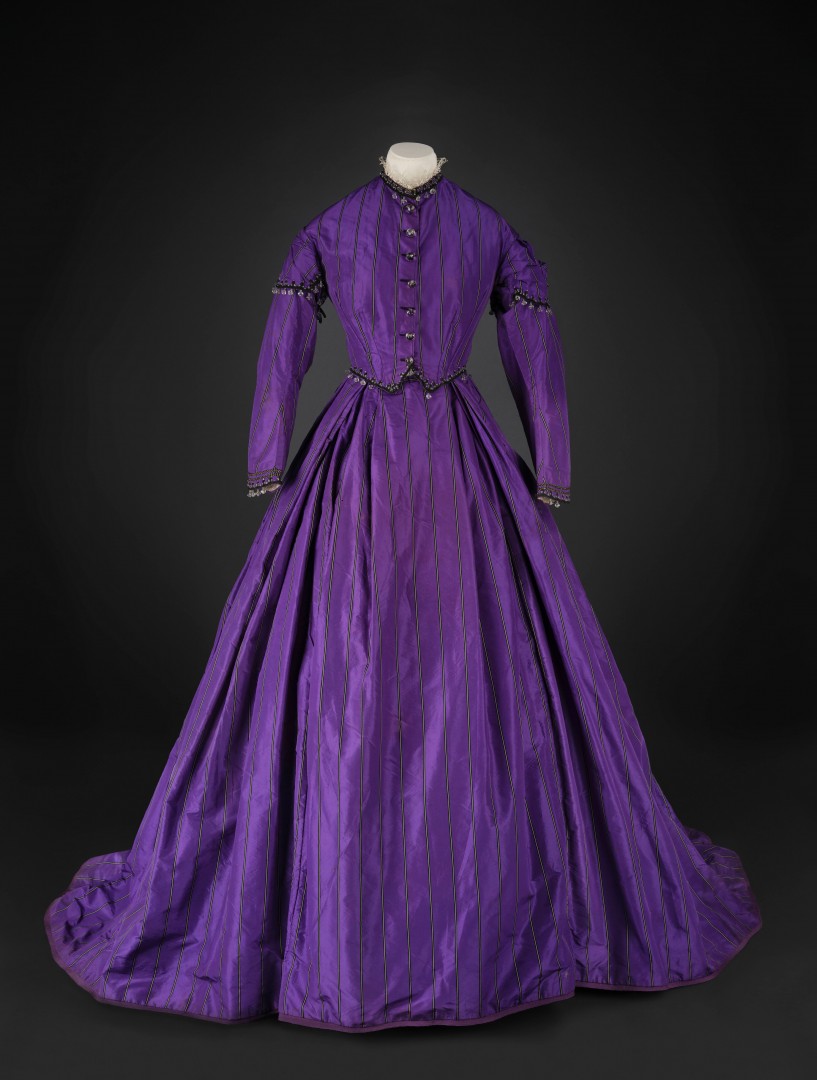
Day dress, English, late-1860s, aniline dyed silk and glass beads, Manchest Art Gallery
Such scientific advances were celebrated in one of the most important cultural events of the 19th century, the International Exhibition of 1862. It brought together examples of British, colonial and scientific products under one roof and it was the first time that synthetic anilines were shown to an international audience. Two of the most fashionable aniline colours on display, vivid pinks - Magenta and Solferino – had been named after recent French victories over Austria in the 1859 Second Italian War of Independence.
The Ashmolean’s extraordinarily colourful Great Bookcase (1859–62) was the centrepiece of the Exhibition’s Medieval Court. Designed by the architect William Burges (1827–81), it was painted by thirteen promising young artists, including Edward Burne-Jones (1833–98) and Dante Gabriel Rossetti (1828-82). Despite their enthusiastic nostalgia, analyses show that Burges and the artists used contemporary materials including aniline green.
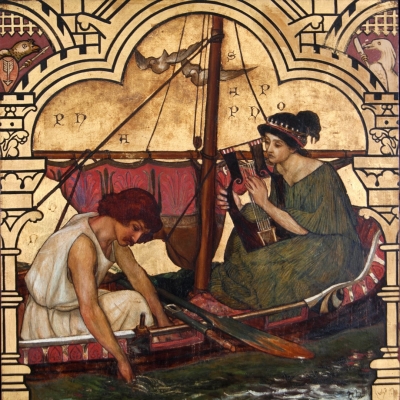
The Great Bookcase, 1859-62, designed by William Burges (1827-81), Ashmolean Museum, University of Oxford
Revivalist and Pre-Raphaelite artists were working in the context of rapid scientific progress and the popularisation of new scientific ideas by figures like Charles Darwin (1809-82). Darwin’s concept of natural selection and the use of colour in the animal kingdom led to particularly gruesome Victorian appetites for two of nature’s most beautiful animals, beetles and hummingbirds. Unlike the feathers of a peacock, whole bird and beetle bodies were incorporated into Victorian fashion and jewellery. Jeweller, Harry Emmanuel created coveted designs including a Hummingbird necklace (1865) made of seven decapitated emerald and ruby-topaz birds. Such was the hummingbird craze that during one week in 1888, 400,000 ‘skins’ were auctioned; the following week a mere 370,000. In 1884 the Portuguese ambassador to London presented Foreign Secretary Lord Granville with a piece of jewellery made of the bodies of 46 iridescent green South American weevils. Granville had these mounted on a tiara and necklace (1885) for his wife.
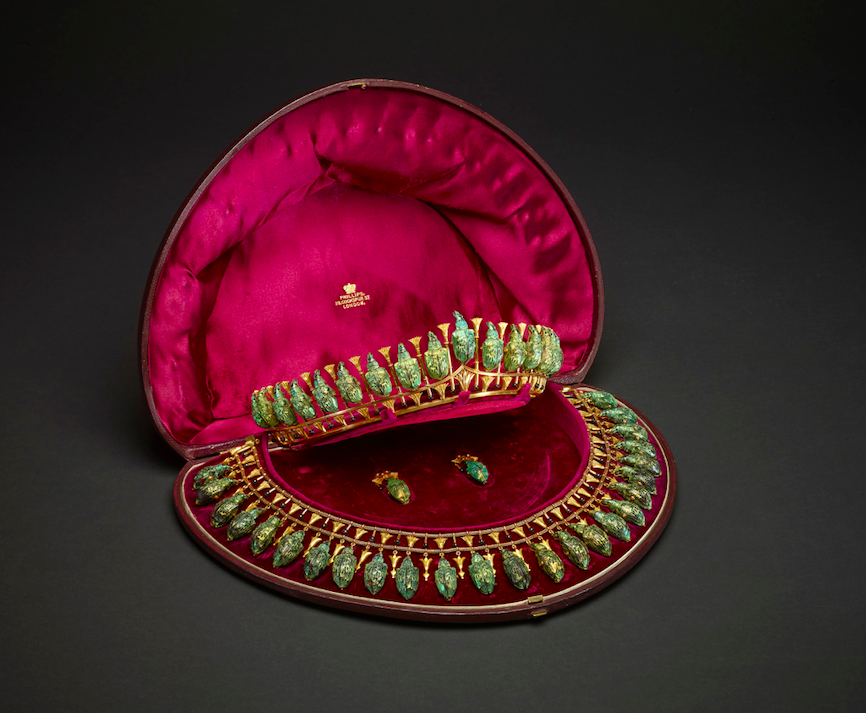
Lady Granville’s beetle parure and case, 1884–5. British Museum, London
Colourful fashion had a human cost too: in 1862 a factory girl making artificial flowers for women’s headdresses died from poisoning. She was said to have vomited green slime and had green tinged eyeballs. The killer was the main ingredient of the new green dye - arsenic.
Scandals such as this and the ever-growing use of colour in popular culture prompted discussions on colour theory and different colours’ moral qualities: John Ruskin (1819–1900) believed artists should stick to the God-given colours of nature but James Abbott McNeill Whistler (1834–1903) disagreed entirely and followed a philosophy of ‘colour for colour’s sake’. His extravagant use of colour was made easier by the invention of collapsible metal paint tubes.
Mr Matthew Winterbottom, Curator of Sculpture and Decorative Arts and Exhibition Curator, Ashmolean Museum, says: “The Victorian colour revolution made a radical impact on the lives of everyday people throughout Europe and beyond; and this is a chance to see some the 19th century’s most colourful and spectacular works of art, fashion and design.”








